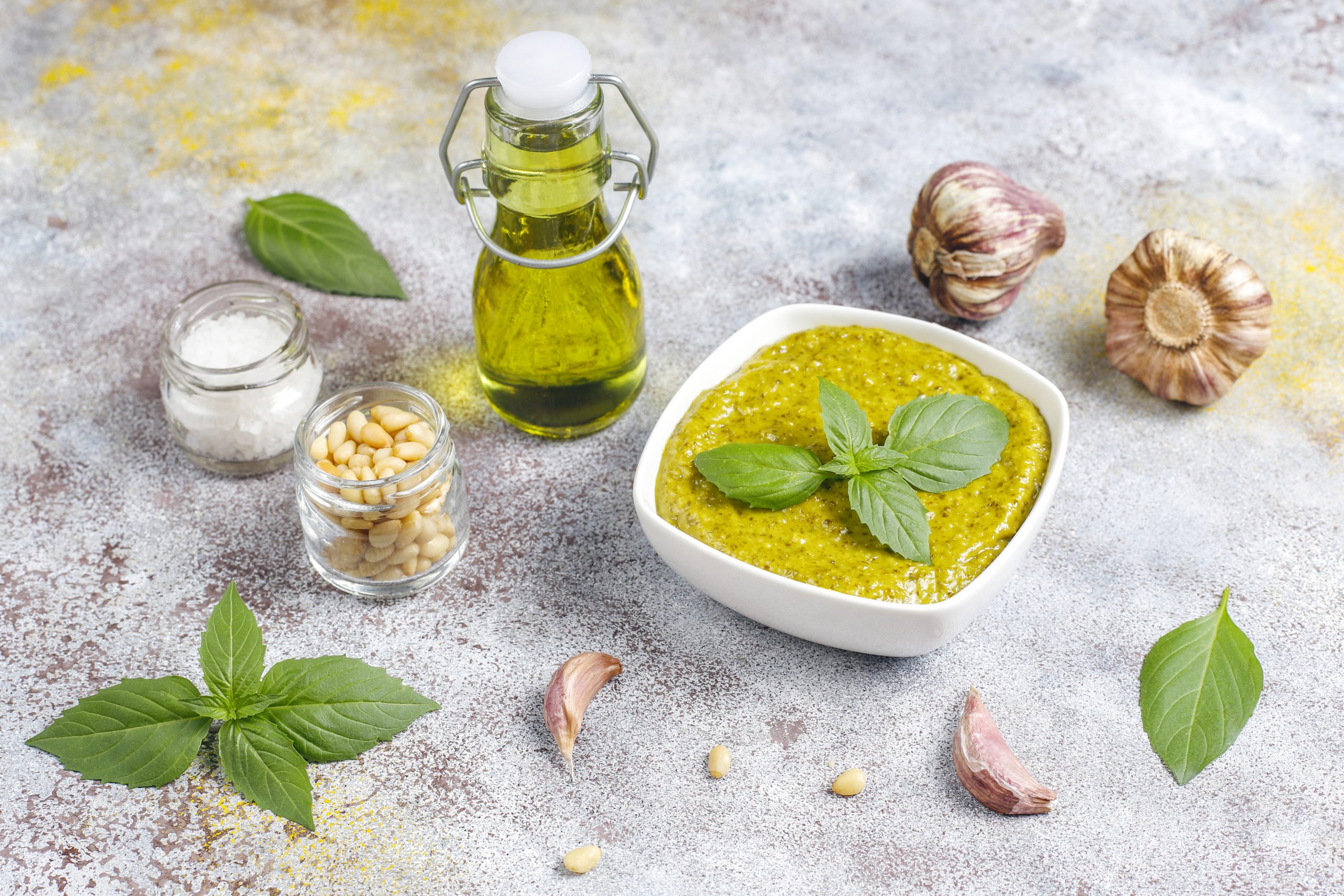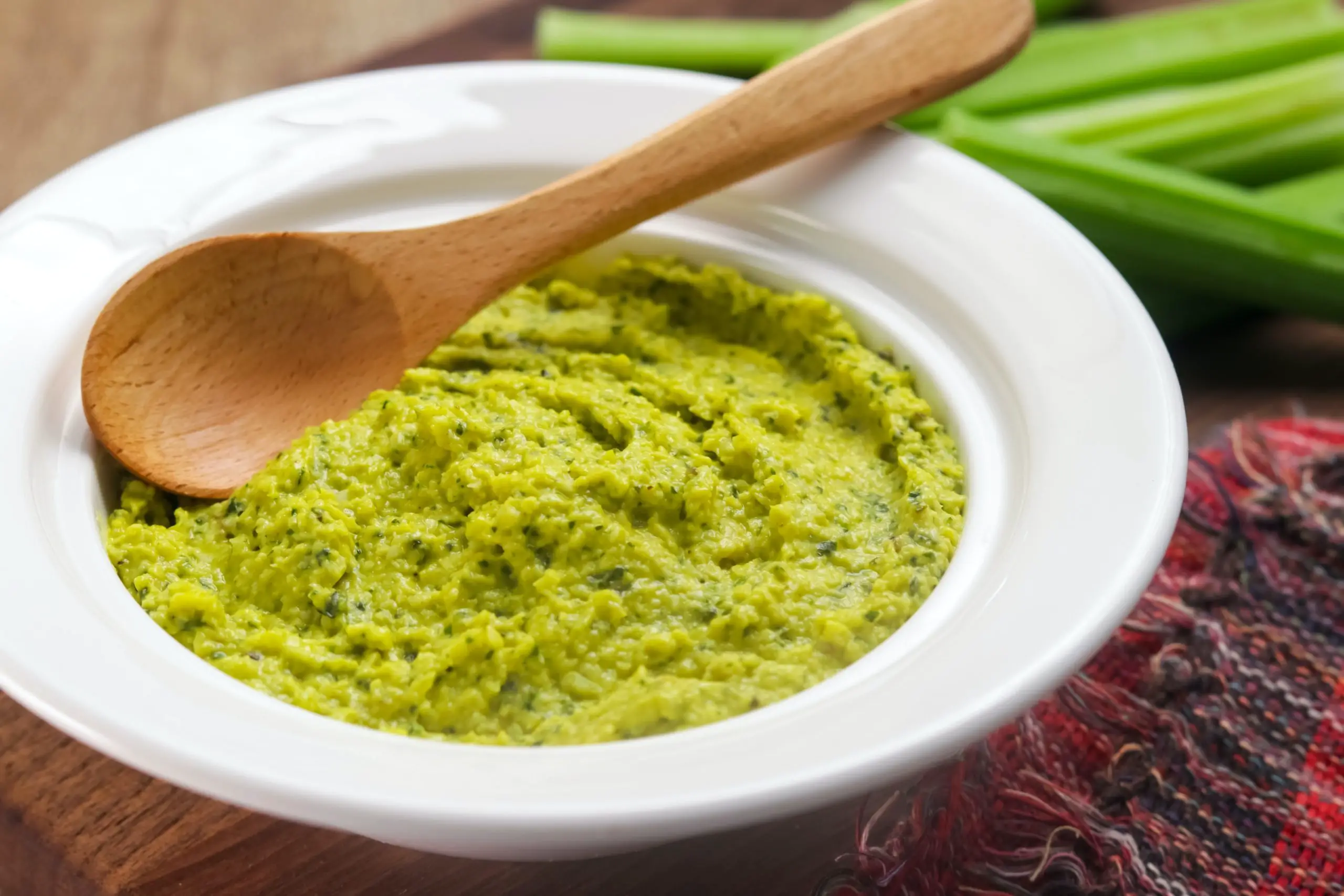Frozen pesto is a great way to preserve the flavor of basil in your favorite dishes. If you are wondering how to freeze pesto, you have come to the right site; here, you will get all the information about pesto. Here are some techniques to keep in mind when freezing pesto. You can store the pesto in a sealed container, freezer bag, or ice cube tray. You can freeze the pesto into separate compartments using an ice cube tray. This allows you to freeze pesto in small portions and use it when needed.

Can Pesto be Frozen?
You should learn how to properly store your homemade pesto if you prefer the flavor to that of store-bought pesto to avoid making it from scratch every time. It is preferable to get basil in the summer because it cannot live in colder climates.
When basil is in season, grab hold of a lot of leaves and prepare enough pesto to last the entire winter if you can’t go a season without it. You can freeze it so you may have it anytime you want, so you don’t have to eat it all in a week.
How to Freeze Pesto?
A delicious pesto can be frozen in its freshness and color by freezing. Whenever feasible, use fresh basil, and freeze the pesto straight soon. You can reduce the preparation time for your upcoming pesto dish by finishing all the labor in advance.
There are as many techniques for preserving pesto as there are many ways to use it in your food. Various techniques will provide slightly varied outcomes; what works for you will depend on how you intend to use and store your pesto. Pesto can be frozen in glass jars, ice cube trays, or other freezer-safe containers.
For up to six months, pesto can be stored in the freezer. Your pesto can be frozen using ice cube trays. This is a great way to freeze pesto in small portions that can be used easily. The ice cubes will freeze in two-tablespoon portions. It’s the perfect size for pesto.
Using a Baking Sheet to Freeze Pesto:
A baking sheet is one of the simplest ways to freeze homemade pesto. Use a quarter sheet pan or the toaster oven tray and line it with wax or parchment paper to freeze pesto. Spread the freshly produced pesto evenly, so it is 1/4-inch thick on the baking sheet. You can always break out as much pesto as you need when you need it by freezing it in a flat layer on a baking sheet.
The second piece of wax or parchment paper should be pressed into the pesto after it has hardened in the freezer for a few hours. Slice the frozen pesto sheet into wedges, put them in a small zip-top freezer bag, label them, and freeze them. You can take the pesto out of the bag whenever you need it and break off whichever much or little you require. Due to the thin sheet nature of the pesto, it defrosts quite quickly.
Using a Mason Jar to Freeze Pesto:
You can also freeze pesto in mason jars. Make sure the jars have enough head space to hold the pesto. Pour the pesto into mason jars and place them in the freezer if you want to freeze it to use as pizza sauce. It will only be optimal to pour it into ice cube trays if you use more.
Using an Airtight Container to Freeze Pesto:
Airtight containers for storing pesto in the freezer include small glass jars like half-pint or four-ounce jars. Pour your pesto into the jars after you’ve finished making it. Put the freezer in after tightly screwing on the lids.
Using an Ice Cube Tray to Freeze Pesto:
Whether you have a large batch of pesto, you want to freeze or leftover pesto that you need to use, freezing pesto in an ice cube tray is a fantastic way to store pesto. Using this method, you can store pesto for up to six months in the freezer.
A few simple steps exist to preserve pesto in an ice cube tray. First, you will need to seal the ice cubes in plastic wrap. Make sure you press gently on each cube compartment. This helps keep the ice cubes from oxidizing.
The pesto should then be blended or processed in a food processor. Using a blender means avoiding a dull blade, which can cause the pesto to turn brown. Once the pesto is blended, you’ll want to add olive oil. Olive oil helps preserve the color of the pesto. You’ll also want to add pepper and garlic.
Depending on your pesto, you’ll want to use about a tablespoon of olive oil. If you have pesto that you want to freeze in smaller portions, you can make pesto cubes and freeze them in a freezer bag. This allows you to freeze smaller amounts of pesto used in larger dishes.
What’s the Composition of Pesto?
The ingredients for authentic pesto include fresh basil leaves, garlic, olive oil, pine nuts, and cheese mashed into a thick, green paste. The gently peppery basil from Liguria, which has a clove-like scent, is also well-known for its buttery-sweet olive oil. These flavorful ingredients were combined and pounded in a mortar and pestle for hundreds of years to create pesto.
There are only a few simple materials needed to make pesto at home. You can add some spinach, arugula, or even kale leaves to give it a stronger and richer flavor. Any green vegetables you can find in your cupboard, including broccoli and zucchini, are welcome to be added if you’re out of basil. For added creaminess, you can also add avocado.
How to Defrost Frozen Pesto?
It would be best to allow frozen pesto to thaw before using it in a recipe. Please place in the refrigerator until ready to use; defrost the pesto in the microwave or a bowl on the stovetop over low heat after removing it from the freezer. When it is melted and ready to use, please turn off the microwave, stir it, and turn it on again. After that, you can enjoy a wonderful pasta dish with pesto.
Does Pesto Change its Color After Being Frozen?
Pesto should have a thin layer of oil to protect it from air exposure and keep its vibrant green color from fading. This is not required; it should be noted. The flavor will remain unchanged, regardless of color, but if you want to keep the pesto looking fresh, you should add a little oil to protect it. Place the parts in an airtight frozen bag or container after freezing it uncovered for approximately an hour or until solid. Then, please remove it from the container.
How to Prevent the Pesto from Turning Black Due to Oxidation?
Using olive oil as a preservation measure is a great way to keep pesto dark as it cools. The fatty acids present in olive oil act as an effective barrier against the wind. Adding lemon juice to pesto also helps retain the green color. Citric acid and ascorbic acid, two antioxidants that stop oxidation, are found in lemon juice.
Blanching the basil before freezing will help keep the pesto from browning. The blanching process removes the enzyme that causes the leaves to turn brown. This process will take a few minutes to complete. For optimal preservation, you should freeze your pesto in an air-tight container.
Another great way to freeze your pesto is to freeze it in cling film. This way, you’ll have easy access to the pesto while retaining its green color. This method also protects the pesto from exposure to light. Folding pesto can be a bit of a hassle. Pesto will take some time to set, and you will have to wait till it sets completely.
What to do with Frozen Pesto?
Whether you’re looking for a quick appetizer, a new ingredient for your recipes, or you love pesto; you can use frozen pesto. Frozen pesto can add great flavor to soups, sauces, and pasta. Fresh pesto can be substituted with frozen pesto for sauces, entrées, and appetizers.
The pesto can be combined with yogurt for a quick and flavorful meal. Frozen pesto cubes can be thawed before being drizzled over a Caprese salad, brushed on warm toast, or used as a dip for crackers and vegetables. You can also use pesto to make a dipping sauce for shrimp, chicken breasts, and salmon.
It can also be used as a pizza and pasta sauce. You can use a high-quality Greek yogurt if you want pesto as a rub on chicken. You can also use pesto to make sandwiches and salads. You can also use pesto as a stuffing for grilled salmon. You can also make your pesto and freeze it. This is a fantastic way to save money.
Conclusion
Having learned how to freeze pesto, you can eat it any time of year, regardless of the season. Pasta, soups, sandwiches, wraps, veggies, and vinaigrettes all greatly benefit from the extraordinary depth of flavor that fresh basil pesto sauce provides. It’s a green sauce most often used as a pasta sauce, but you can also add it to other dishes to add color and flavor.
While pesto frozen in mason jars is ideal for pasta sauce and can also be used as a topping for handmade pizza, Pesto frozen into cubes can be used as a falling sauce or salad dressing. Make a big batch of this and store it in the freezer to have on hand for quick throw-away meals. Remember to mark freezer bags so you know when food has gone bad and needs to be taken out.
